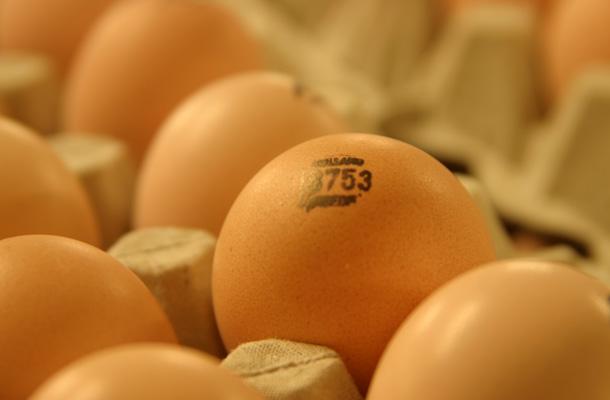During the first day of my visit, the egg storage room was still quite full, despite the fact that a delivery of eggs had been cancelled the previous week, due to extremely bad weather. The hatchery manager explained that reduced setting rates, due to the upcoming Christmas season, were due to the processing plants having fewer working days and reducing the numbers of eggs set, as a smaller number of broiler farms needed to be supplied 2 - 3 weeks later.
The following day was “egg delivery day”, and this time, two planes landed, one carrying the batch that should have arrived the previous week. That day, six truckloads of eggs arrived at the hatchery - and clearly the egg storage room’s capacity was not able to cope with that. The oldest eggs, still left behind from the previous week, had already been transferred to setter trays the day before and were now wheeled to the setter room, waiting to be set a day later. However the newly arrived boxes still did not all fit into the storage room, and some had to be placed in uncooled corridors and even outside, under a roof with an external temperature of 30 – 32 ˚C . I advised the removal of the empty (folded) egg boxes that were piled up, ready for sale, in the egg storage room, and to give the highest priority to storing the hatching eggs under optimal conditions.
In the following weeks, hatch results gradually dropped to a low of 65per cent. I explained that the policy of setting the oldest eggs first, then adding further, large stocks of eggs every week, was resulting in an average egg age being too high. A drop of 1.5 – 2 per cent in hatchability per extra day of storage after the first 7 – 9 days is not unrealistic. The best and most practical solution was, I advised, to send one entire delivery of the oldest eggs for consumption to the egg industry - and bear the losses. This proposal was accepted – and despite the short, sharp pain of repurposing hatching eggs for eating, the hatchery is now back to delivering their original, profitable results.
We welcome your feedback on this article - and if you require any additional information, please don't hesitate to contact us by email at info@pasreform.com.
